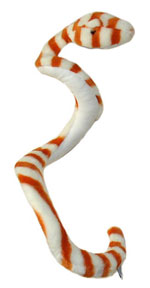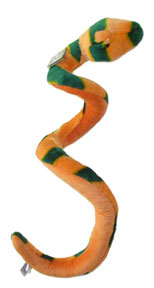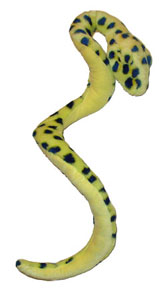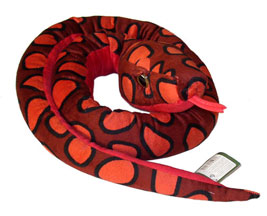The Coral Snake Family (Elapidae) includes the highly venomous cobras, kraits, mambas, taipans, corals and sea snakes. The Coral Snake is easy to identify due to its coloration, which consists of red, yellow and black bands. The head is yellow with a black nose. Snakes with similar coloration include the scarlet snake and the scarlet kingsnake, but these lack the black nose. Coral snake venom is highly neurotoxic but the snakes are generally sma ll and not prone to bite, but it is best to leave them alone. If they do bite, it can be fatal. Luckily these snakes are shy and rarely seen.
ll and not prone to bite, but it is best to leave them alone. If they do bite, it can be fatal. Luckily these snakes are shy and rarely seen.
Coral snakes found in America are from 13 to 47 inches long. The Arizona Coral is the smallest. Their habitat is varied. The range of the Arizona Coral is from central Arizona to southwest New Mexico and south to Sinaloa, Mexico. The Eastern Coral is along the very southern tier of the USA from North Carolina to Texas.
Their diet consists of other small snakes and lizards. They are egg layers. The clutch consists of 3 to 12 eggs. The plush Coral Snake shown here is a baby coral. It is made by Ganz.
Photo of coral snake by Jeff Servoss/USFWS.
The Rough Green Snake, Opheodrys aestivus, is a slender  emerald green snake and is a common resident of the southeast. Excellent climbers, they spend most of their lives in vines, trees and bushes. They are very well camouflaged and are rarely seen. Their diet consists of insects and spiders.
emerald green snake and is a common resident of the southeast. Excellent climbers, they spend most of their lives in vines, trees and bushes. They are very well camouflaged and are rarely seen. Their diet consists of insects and spiders.
Green Snakes reproduce by laying eggs. They will deposit four to ten eggs in a rotten log in late spring or early summer. The young, which are seven- to eight inches long, hatch 60 to 70 days later. Green Snakes reach adult size (2-1/2 to 3 feet) in 2 years. They are nonvenomous and do not pose a threat to humans. The Rough Green Snake plush toy shown here is made by Ganz.
The Brazilian Rainbow Boa belongs to the Order Squamata, the Boidae Family, 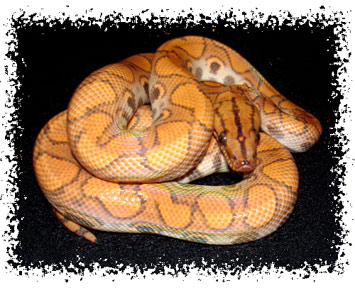 and the Genus Epicrates. It's Latin name is Epicrates cenchria cenchria. This is a subspecies of the rainbow boa. The coloration is brown or reddish brown. The skin is soft and iridescent. The pattern varies. This is considered one of the world's most beautiful snakes.
and the Genus Epicrates. It's Latin name is Epicrates cenchria cenchria. This is a subspecies of the rainbow boa. The coloration is brown or reddish brown. The skin is soft and iridescent. The pattern varies. This is considered one of the world's most beautiful snakes.
These boas range from four to six feet in length.
Rainbow boas range includes much of South America. Brazilian rainbow boas occur in the Amazon Basin, and in coastal Guiana, French Guyana, and Suriname and southern Venezuela. They prefer humid woodland forests but can sometimes be found in open savannas.
In the wild the diet consist of rodents, birds, and possibly some forms of aquatic life and lizards.
They can begin reproducing in the first 2.5 to four years. Gestation lasts about five months. Baby Brazilian rainbows are born live in litters of two to 35. A typical litter contains twelve to 25 babies.
They may live up to 20 years in captivity.
The plush toy Rainbow Boa stuffed animal shown here is made by Ganz.
